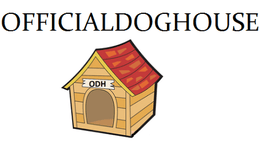How your Dog Drinks

Watching your dog drink from his bowl is endearing. We like hearing the sloshy sounds and don’t mind when water is lapped over the sides of the bowl and onto the floor.
Scientists at Virginia Tech and Purdue University were curious about how dogs drink water, and recently studied the drinking habits of a number of different dog breeds and sizes.
An assistant professor at Virginia Tech, Sunny Jung’s current study, sponsored by the National Science Foundation's Physics of Living Systems program, reveals cats and dogs have incomplete cheeks, which allow them to open their mouths wide to deliver killing blows for hunting. However, those cheeks make suction drinking impossible.
Humans have complete cheeks, which allow us to suck water into our mouths.
Using cameras to closely watch how a dog drinks, Jung found that the rapid motion of lapping up water, which he says is five times that of gravity, creates water columns, which allows the water to enter the dog’s mouth. His research also found that larger dogs, because of the size of their tongues, increase the amount of water they receive. The bigger the dog, also means more splashing.
Behind all of the happy, wet messes, dogs splash when they drink because they have the cheeks of a predatory quadruped. By studying the drinking habits of various dog breeds and sizes, a group of researchers at Virginia Tech and Purdue University has recently identified and modeled the fluid dynamics at play when dogs drink water.
The findings will be described today in a talk at the American Physical Society's Division of Fluid Dynamics (DFD) meeting in San Francisco, Calif.
Dogs and cats have incomplete cheeks, which allow them to open their mouths wide to deliver killing blows. But what makes pack hunting possible also makes suction drinking impossible. Unable to seal their cheeks completely, there is no way for a dog to suck up water. Conversely, humans have "complete" cheeks, and we drink by creating negative pressure, allowing us to suck water into our mouths and down our throats.
The researchers found that heavier dogs drink water with the larger wetted area of the tongue. This indicates that an allometric relationship exists between water contact area of the dog's tongue and body weight -- thus the volume of water a dog's tongue can move increases exponentially relative to their body size.
How Much water does my dog need?
It all depends on her activity level, size, age and the weather, but in general, an average dog needs to drink between 8.5 to 17 ounces of water per 10 pounds (55 to 110 milliliters per kilogram) per day.
3 easy ways to keep your dog supplied with fresh water.
Heated water bowl keeps water from freezing
Auto Fill water bowl connects to hose and stays full
Water fountain filters water to keep it fresh and clean.
General Guidelines for Water Consumption for Dogs
- A good general guideline is that a healthy dog should drink between ½ and 1 ounce of water per pound of body weight each day. So a healthy 65-pound Labrador Retriever should be drinking between about 33 and 65 ounces, or about ¼ to ½ gallon of water daily.
- If your dog is eating a moisture-rich, species-appropriate diet, she’s getting some of her water needs met with each meal, so she may not drink as much from her water bowl. But if she’s eating primarily dry dog food (which I don’t recommend), she may actually need more than the average daily intake to compensate for the lack of moisture in her diet.
- Puppies need to drink small amounts of water every couple of hours and should be closely monitored and encouraged to drink.
- After a period of hard play or exercise, use caution when your dog rehydrates. If he immediately laps up the contents of his water bowl, rest him for a bit before you refill his bowl. If your dog is very active, it’s a good idea to have water with you when he exercises so that you can give him frequent short water breaks to keep him hydrated.
- During the warmer months of the year, especially during summer, it’s important to monitor your dog’s water intake to insure she’s adequately hydrated.
To determine if your dog may need more water, lift some skin at the back of her neck and let it go. If your dog is well hydrated, the skin will fall quickly back into place. The skin of a dehydrated dog will fall more slowly and form sort of a tent. Another method is to check your dog’s gums. Moist, slick gums indicate a good level of hydration; dry or sticky gums mean your pet’s body needs more water.


Leave a comment